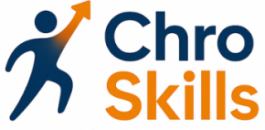
Understanding the Role of a Chief Human Resources Officer
Setting the Stage for HR Leadership
The position of a Chief Human Resources Officer (CHRO) is integral to the functioning of any organization. Understanding the role of a CHRO lays the groundwork for effective leadership in Human Resources (HR). At the core of this role lies the responsibility to manage and develop the workforce while ensuring compliance with organizational goals and strategic planning. CHROs are pivotal in facilitating training and development initiatives to bridge skill gaps within organizations. They are tasked with aligning employee training programs with both immediate needs and future business objectives, ensuring that skill development remains a priority in a rapidly evolving digital workplace. Moreover, they are responsible for conducting comprehensive skill gap analyses that guide organizations in crafting effective workplace skills plans (WSP). In today's rapidly changing business environment, a CHRO needs to demonstrate a blend of sophisticated skills ranging from strategic planning to emotional intelligence. They must engage in skills-based planning that encompasses understanding employee needs, fostering development, and integrating digital tools effectively. The journey for any aspiring CHRO involves navigating through a multitude of challenges, including aligning the outcomes of workplace skills plans with broader business objectives and overcoming potential obstacles in skills planning. This necessitates a robust understanding of organizational data and its practical application in meeting the workforce skills demands. Aspiring HR leaders can gain deeper insights into elevating their HR leadership strategies for high-end performance by engaging with resources such as Elevating HR Leadership Strategies. Understanding the multifaceted role and adeptly managing these responsibilities positions a CHRO as a key player in driving organizational success.Key Skills for Effective HR Leadership
Essential Competencies for HR Leadership
In the evolving landscape of human resources, the role of a Chief Human Resources Officer (CHRO) is pivotal. Effective HR leadership requires a blend of strategic and interpersonal skills to navigate the complexities of workforce management. Understanding these key competencies is crucial for developing a comprehensive workplace skills plan that aligns with business objectives.
Strategic Thinking and Planning
CHROs must possess strong strategic thinking abilities to align HR initiatives with the organization's long-term goals. This involves conducting a thorough gap analysis to identify skill gaps and develop targeted training programs. Strategic planning ensures that skills development initiatives are not only reactive but also proactive, preparing the workforce for future challenges.
Data-Driven Decision Making
Incorporating data into HR decision-making processes is essential for effective skills planning. CHROs should leverage data analytics to assess workforce skills, identify trends, and measure the impact of training initiatives. This data-driven approach helps in crafting a workplace skills plan that is both efficient and aligned with business objectives.
Leadership and Communication
Strong leadership and communication skills are vital for CHROs to inspire and guide employees through change. Effective communication ensures that the workforce understands the importance of skills development and is engaged in training initiatives. Leadership skills also play a crucial role in fostering a culture of continuous learning within the organization.
Adaptability and Innovation
The ability to adapt to changing business environments and embrace innovation is critical for CHROs. This includes staying updated with digital advancements and integrating new technologies into skills development strategies. By fostering an innovative mindset, CHROs can ensure that their organizations remain competitive in a rapidly evolving market.
Compliance and Ethical Standards
Maintaining compliance with legal and ethical standards is a fundamental responsibility of HR leaders. CHROs must ensure that all training and development initiatives adhere to relevant regulations and promote ethical practices within the organization. This not only protects the organization but also builds trust with employees and stakeholders.
By mastering these essential competencies, CHROs can effectively lead their organizations in developing a skilled and adaptable workforce, ready to meet the demands of the future.
Developing a Comprehensive Workplace Skills Plan
Crafting a Forward-Thinking Skills Roadmap
Creating a robust and forward-thinking workplace skills plan is essential for any Chief Human Resources Officer (CHRO) looking to foster an environment of continuous learning and development. This approach will not only bridge current skills gaps but also prepare the organization for future challenges. The plan should be comprehensive, addressing the diverse needs of the workforce while aligning with overall business objectives. An effective skills plan requires a detailed assessment of the current skills landscape within the organization. This involves conducting a thorough gap analysis to identify the disparities between existing workforce skills and those needed to drive the organization forward. Understanding the skill gaps will guide the formulation of targeted training initiatives. The use of data-driven insights is crucial in this process. Leveraging data analytics can illuminate areas of improvement, highlight emerging trends in skill requirements, and provide tangible metrics for measuring success. Organizations should consider utilizing digital platforms to efficiently manage and track training and development initiatives. Training programs should be multifaceted, combining traditional training methods with innovative approaches such as project shadowing. This hands-on learning approach not only enhances leadership skills but also strengthens the organization’s talent pipeline. By visiting enhancing leadership through project shadowing, you can explore how this method can be integrated into your workplace skills plan. Furthermore, a successful skills plan must be aligned with compliance requirements and reflect a deep understanding of the organization's business context. Considering the specific regulatory landscape, such as what is found in regions like South Africa, ensures that skills development initiatives are both effective and compliant. By prioritizing skill development that supports business objectives, organizations can foster a workforce that is resilient, agile, and well-equipped to adapt to the evolving business environment. This strategic approach to skills planning not only enhances workforce capabilities but also drives organizational growth and success.Aligning Skills Development with Business Objectives
Integrating Skills Development with Business Strategy
Creating an effective workplace skills plan that aligns workforce development with organizational goals is crucial for Chief Human Resources Officers (CHROs). A strategic approach ensures that skills training is not just an isolated HR initiative but a key driver of business success. CHROs must first conduct a comprehensive skills gap analysis to identify the areas where development is needed. This process involves examining current employee skills against future organizational needs. By understanding these gaps, HR leaders can craft a skills plan that addresses both immediate challenges and long-term business objectives. Another essential step is aligning the skills development plan with the organization’s business objectives. This ensures that investments in training and development initiatives translate into tangible business benefits. Collaboration with business leaders can help define the necessary skill sets that will propel the company forward. Moreover, technology and data play pivotal roles in skills planning. Leveraging digital tools for tracking employee progress and compliance helps in making informed decisions about training initiatives. Access to real-time data allows HR teams to adjust plans swiftly, ensuring alignment with business strategy. Training programs should be customized to resonate with the organization's culture and the unique needs of its workforce. Employing a mix of learning methods—like digital platforms and hands-on training—can cater to diverse learning preferences while building a resilient and future-ready workforce. In regions like South Africa, where skill gaps may be more pronounced, CHROs must be proactive. A strong focus on continuous learning and keeping the workforce engagement at an optimum level is crucial to bridge these gaps effectively. Successfully aligning skills development with business objectives not only fills the skill gaps but also fuels organizational growth, making it indispensable for HR leaders aiming to stay competitive in today's dynamic business landscape.Overcoming Challenges in Skills Planning
Addressing and Overcoming Potential Barriers
Effectively crafting a workplace skills plan is not without its challenges. As Chief Human Resources Officers (CHROs) delve into skills planning, several barriers may manifest. These need addressing in order to ensure the success of a workforce skills strategy. One common challenge is the skills gap that persists in many organizations. Conducting a thorough gap analysis is essential to identify the areas where skills are lacking. Digital transformation efforts, for instance, often reveal that employees might not possess the necessary digital skills. It’s imperative for organizations to plan training development initiatives that cater to bridging these gaps. Compliance is another challenge that CHROs must navigate. Workforce skills must align with legal and regulatory requirements, which vary by region. In South Africa, for example, the government mandates annual training reports (ATR) and workplace skills plans (WSP), which require meticulous documentation and compliance. Resistance from employees can also pose a significant hurdle. When workforce training programs change, some employees may resist, particularly if the changes appear overwhelming or misaligned with their current roles. Effective communication of the business objectives behind skills development can mitigate resistance and foster an environment receptive to learning and growth. Data-driven decision-making is integral to overcoming these challenges. Leveraging data analytics tools can provide insights into employee performance and the effectiveness of training initiatives, thus facilitating ongoing development adjustments to better meet the organization’s needs. Lastly, securing management buy-in is crucial. When senior leadership understands the link between strategic business priorities and the skills plan, they are more likely to allocate the necessary resources and support for the initiative. In conclusion, while developing a comprehensive skills plan may be challenging, addressing these potential barriers is key to a successful outcome. Employing strategies that include gap analysis, compliance adherence, clear communication, data utilization, and securing leadership backing will position CHROs to effectively develop a skilled and versatile workforce.Measuring the Impact of a Workplace Skills Plan
Evaluating the Effectiveness of a Skills Plan
To fully appreciate the success of a Chief Human Resources Officer's workplace skills plan (WSP), it's imperative to delve into the methodologies for measuring its impact. Assessing progress enables organizations to pinpoint skill gaps and refine learning initiatives, tailoring them to meet dynamic business objectives. A pivotal component is the implementation of key performance indicators (KPIs) to gauge training and development outcomes. KPIs should be aligned with business goals, ensuring they quantitatively reflect the progress of workforce skills development. For instance:- Increase in employee productivity linked to specific training programs.
- Reduction in skill gaps through targeted development initiatives.
- Compliance rates with annual training requirements, particularly relevant in regions like South Africa.













